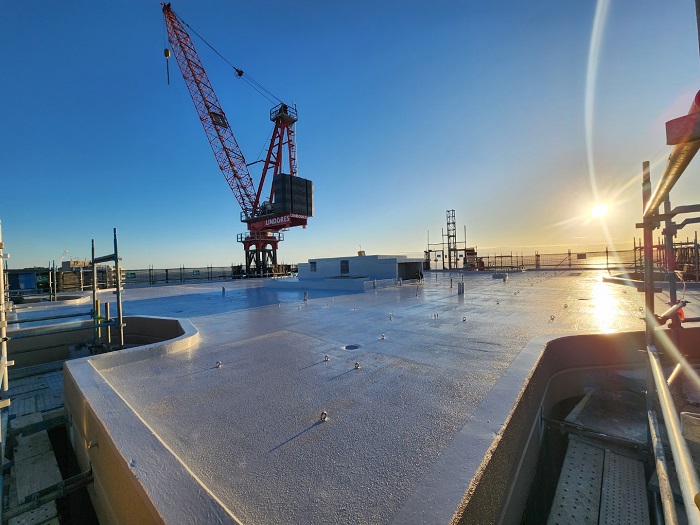As we all know, water can be a destructive force for any structure. From eroding concrete to internal defects that can cause mould and mildew, water damage can compromise the integrity of a building and lead to costly repairs. That is why waterproofing is so important.
Whether you are building a new structure or trying to protect an existing one, here are some dos and don’ts to keep in mind for a dry and durable structure.
Do: Plan for waterproofing from the beginning
The best time to waterproof a building is during its design and construction phase. This will enable thorough planning and the installation of effective waterproofing systems to ensure all areas are covered and prevent water infiltration. It is important to work with a qualified architect or engineer who understands the unique waterproofing needs of your building.
Don't: Skimp on materials
When it comes to waterproofing, quality materials are key. Cutting corners and using low-quality or unsuitable materials can lead to inadequate protection, leaving the structure vulnerable to water damage and potential structural failure down the line. To avoid such scenarios, it is crucial to choose materials that are specifically designed for waterproofing. Investing in high-quality products may seem expensive in the short term, but is a wise decision in the long run, as it can save you from costly repairs and replacements.
Do: Ensure adequate drainage
Without proper drainage, water can accumulate around the foundation of a building, leading to erosion and potential structural damage. In addition, standing water can also create an environment for mould and mildew growth, which can compromise indoor air quality and lead to health issues. Ensuring adequate drainage will assist in diverting water away from the building and prevent water infiltration.
Don’t: Ignore Australian standards and regulations
These standards and regulations have been put in place to ensure that buildings are safe, durable, and able to withstand the unique weather conditions of Australia. By ignoring these guidelines, you may be putting your building at risk of water damage, structural failure, and even legal liability. It's important to work with professionals who are familiar with these standards and regulations to ensure that your building is up to code and protected from water damage.
Do: Ensure the correct product selection
Without proper drainage, water can accumulate around the foundation of a building, leading to erosion and potential structural damage. In addition, standing water can also create an environment for mould and mildew growth, which can compromise indoor air quality and lead to health issues. Ensuring adequate drainage will assist in diverting water away from the building and prevent water infiltration.
Don’t: Forget to do testing
By conducting proper testing, you can identify any potential issues or weaknesses in the system and address them before they become major problems. This can save you from an array of issues down the line. Additionally, testing can help you determine whether the product is suitable for the unique waterproofing needs of your building, such as the climate and location.

Do: Ensure a clean surface
An unclean surface can compromise the effectiveness of the waterproofing system. Ensure a clean surface area that is free from dirt, debris, or other materials on the surface that can interfere with the adhesion of the waterproofing system to the substrate.
Don’t: Rush the curing process
Allowing the system to fully dry and adhere to the substrate is crucial and rushing the curing process can lead to problems by compromising the effectiveness of the waterproofing system. The time will vary depending on the weather conditions, temperature, and the type of membrane, therefore, it is always recommended to follow the manufacturer’s specifications.
Do: Address potential problem areas
Every structure has areas that are more susceptible to water intrusion than others, such as roofs, windows, and doors. It's important to identify these areas and take extra precautions to prevent water from entering. This may include installing additional flashing, sealing joints and seams, or adding drainage systems.
Don't: Ignore maintenance
Even the best waterproofing systems require regular maintenance to remain effective. Be sure to inspect your building regularly for signs of water damage, such as mould or mildew, and address any issues as soon as possible. Regular maintenance can help extend the lifespan of your waterproofing systems and prevent costly repairs.
Do: Consider the climate
Different climates require different waterproofing strategies. For example, buildings in areas with heavy rainfall may require more robust drainage systems than those in drier climates. It's important to consider the unique weather patterns of your location and plan waterproofing accordingly.
Don't: Neglect corners and joints
These areas are particularly vulnerable to water penetration as they are often overlooked and not given the attention they require. Neglecting these areas can lead to water leaks and damage to the structure. It is essential to pay attention to these areas to ensure its structural integrity and safety.
There are many factors to consider when waterproofing to ensure a dry and durable structure, especially as the different types of waterproofing systems have their own strengths and weaknesses. It is advised to always read the technical and safety data sheets of your waterproofing systems and to work with a qualified professional who understands and can choose the best system for your building based on its unique needs.

